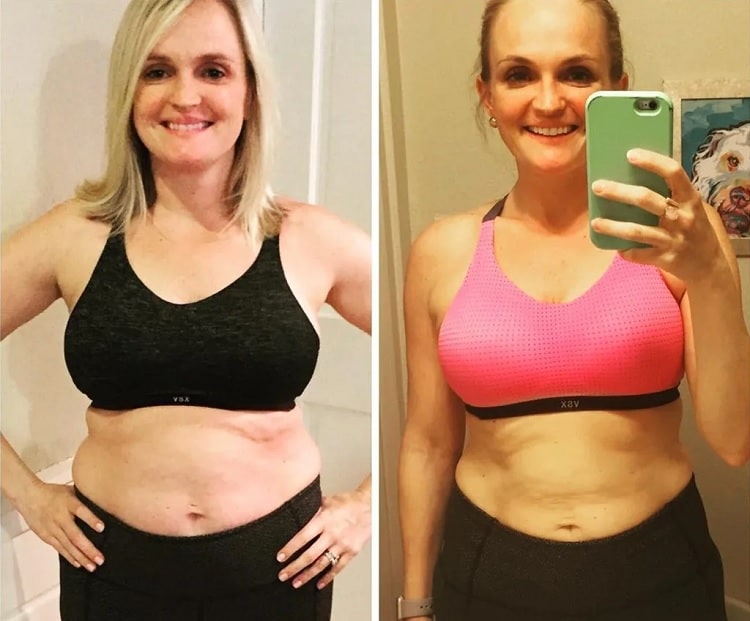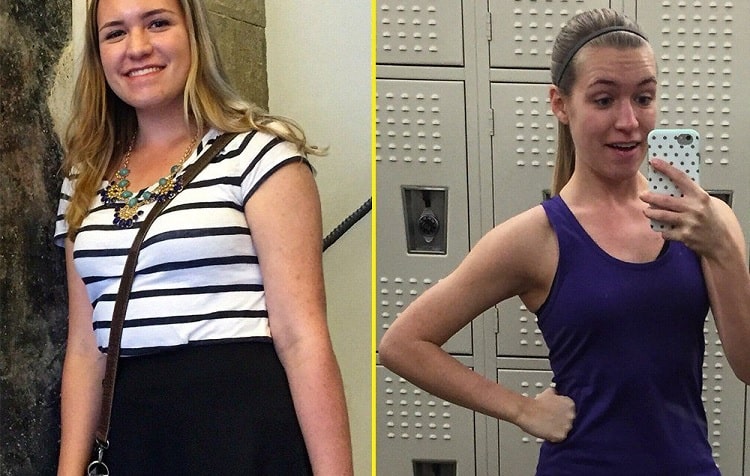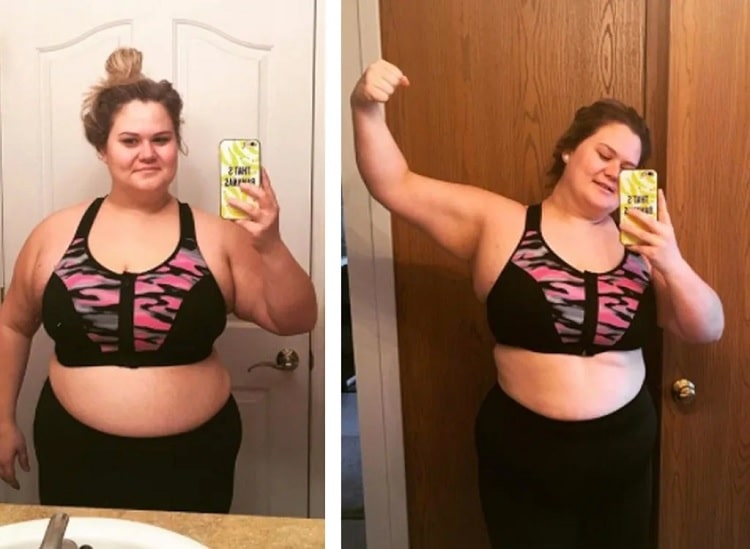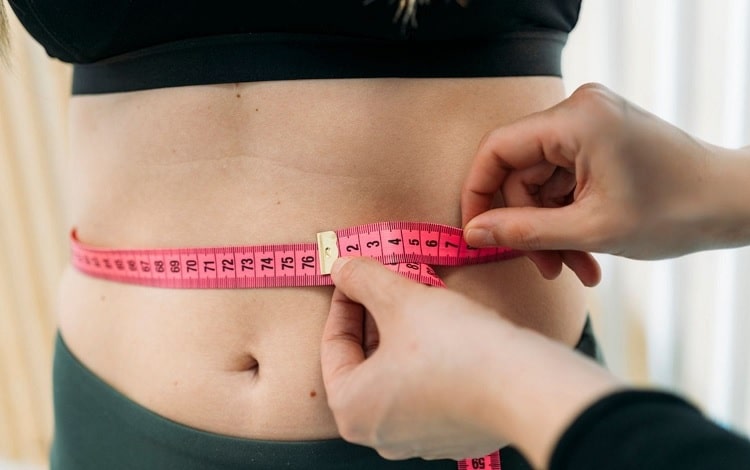The 30-Pound Challenge: A Comprehensive Guide to Weight Loss
Weight loss has been gaining popularity over the years among people worldwide. The reason for this trend owes to the health concerns associated with being overweight or obese. When people begin with their weight loss efforts, they first have to understand their bodies and then plan accordingly.
Having better knowledge about your food triggers, goals, strengths, weaknesses, and lifestyle will help you achieve desirable results. Losing 30 pounds can be a challenging goal to achieve. But it is possible by making necessary lifestyle adjustments and adopting a regular exercise regimen.
Even though a 30-pound weight loss can be time-consuming, you can organize your schedule and promote weight loss with good strategy and execution. A 30-pound weight loss is a significant loss of fat that can bring noticeable changes to your body.
But it is best to achieve the target in a healthier way. You get sustained weight loss benefits from doing this. In this article, we will look at how to lose 30 pounds safely and the benefits that can be expected.

How Can You Lose 30 Pounds Safely?
Despite the abundance of weight reduction supplements that promise quicker results, it is best to choose healthy methods like dietary alterations and lifestyle improvements. Adopting such techniques will help you lose weight steadily without compromising your health.
Enter Caloric Deficiency
In order to lose weight, your body needs to consume fewer calories than it burns. When you over consume calories, it accumulates in your body as fat and causes weight gain. Therefore, when you decide to lose weight, you need to regulate your calorie intake.
Instead of eating foods with more calories, you need to begin by eating foods with fewer calories, like veggies, legumes, fruits, and whole grains. When you regularly consume low-calorie foods, it can help burn excess calories in your body for fuel.
You also have to increase your nutrient intake while reducing calories. Consuming nutrient-dense foods improves your overall health along with getting rid of excess pounds. You can also add lean cuts of meat, poultry, and fish to your diet.
While reducing calorie intake, you should avoid reducing too many calories since it can slow down your metabolism and make weight loss more challenging. It is advisable to reduce your intake by 500–750 calories per day to lose one to two pounds per week in a sustainable manner.
Increase Protein Intake
Consuming protein-rich foods help build lean muscle and support weight loss. Foods with a sufficient level of protein can promote your exercise performance. Protein is also found to reduce the level of the hunger hormone named ghrelin, thereby controlling hunger and curbing cravings.
A clinical trial shows that a high-protein diet causes long-term reductions in hunger, calorie consumption, and body weight. Foods like eggs, legumes, dairy, meat, poultry, and fish are nutritious sources of protein.
Consume More Fiber
Fiber is a nutrient that, when consumed, absorbs water and slows down digestion, giving you a fuller feeling. So, adding fiber to your diet assists in reducing your appetite and controlling your intake of calories. When your appetite is lowered, you have control over your food consumption. One of the major problems with losing weight is overcoming your cravings.
Fiber helps to resolve this issue and assists you in losing weight. Besides that, it also regulates your blood sugar levels, which are linked to hunger pangs. Whole grains, vegetables, legumes, nuts, seeds, and fruits are foods high in fiber. You can also drink high-fiber beverages to lose weight.
Drink A Lot of Water
Water is essential for almost all bodily functions. Staying hydrated during your diet is vital for maintaining your health. Apart from these, water can aid in weight loss by boosting your metabolism and suppressing your appetite. Some research suggests that drinking water before a meal can reduce calorie intake and aid in weight loss. Drinking water also increases the burning of calories and causes fat loss.
Consider A Resistance Training
When you plan to lose weight, you need to include suitable physical programs in your routine. There are plenty of exercise plans that can help you with weight loss. Resistance training is one among them that utilizes resistance for muscle contraction and endurance.
Losing weight can be challenging at the initial stage. But exercises like resistance training increase lean muscle mass, which makes it easy to lose weight. When your lean muscle mass is maintained, it helps burn more calories at rest. Resistance training, such as using free weights or bodyweight exercises, can help people reduce fat mass, build lean muscle, and speed up their metabolism.
Include Cardio in Your Exercise Routine
Increasing your heart rate when exercising is known as cardio and helps you burn more calories. When you decide to lose 30 pounds faster, the best option is to include cardio in your routine. You have to do cardio for two to forty minutes a day to achieve better results. Setting reasonable goals, starting with low-intensity aerobic activity, and then stepping up the intensity of your workouts are the ideal strategies for starting with cardio.
Some of the aerobic exercises are walking, swimming, jogging, running, and hiking. You can choose the one that matches your preferences and goals. Aerobic exercises, including aerobic dancing, cycling, running, and swimming, are beneficial for women to lose 30 pounds.
Besides these, you can also attempt high-intensity interval training, which shifts between short bursts of vigorous activity and rest intervals to maintain an increased heart rate. While losing 30 pounds, it is best to avoid fad diets, improve your sleep quality, manage a food journal, and reduce stress levels.
Exercise Plan to Lose 30 Pounds
When you’re planning to lose weight, you can split your workout routine into three phases:
- Warm-ups
- Weight training
- Cardio
You can begin with warm-ups like light aerobic exercises for five minutes. Then, you can participate in weight training like dumbbell squats, pushup-position row, lat pulldown, Russian twists, and pushups. After every weight training day, you have to give yourself at least a day’s break. This resting period helps to protect your hard-earned muscles. It will help if you do weight workouts three days a week.
The exercises should be done in a circuit, with one set of 10 to 12 repetitions of each exercise followed by a 60-second break. Once or twice again, repeat the same process to complete two or three circuits. Reverse the order of the exercises during every other workout.
When you end your session with cardio, your body will be able to reap the benefits of your exercise regimen. Engaging in regular exercise plans can shed excess pounds to up to 30 lbs. It is recommended to consult a certified fitness instructor to find exercise programs that suit your health and needs.
How Does Losing 30 Pounds Affect Your Face?
Losing weight can make a noticeable difference in your face. Consuming healthy foods can help maintain your skin while losing weight. Some people have found their faces getting slimmer after losing 30 pounds. Losing 30 pounds may not bring the same results to everyone because there are a variety of factors that affect your skin.
As you grow old, your skin begins to lose its collagen. The collagen in your skin holds it firm and prevents sagging and folds. When you lose weight, the fat in many parts of the body lose, which includes the face. This fat reduction reduces the volume in your face, resulting in skin laxity. So, losing 30 lbs can affect your face and cause skin sagging in some people.
But you don’t have to worry about it because it is natural. You can go for topical treatments to regain your skin texture. There are a variety of skincare products that could help with improving your skin. If you are unhappy with their results, you can consult your dermatologist to get a better solution.
How Long Does It Take to Lose 30 Pounds?
While there are numerous ways to lose weight, it is best to lose weight gradually through natural methods. Losing 30 pounds in a steady manner improves the long-term benefits of weight maintenance. A healthy weight loss would be losing one to two pounds per week. Making dietary changes and lifestyle alterations can help you lose weight safely. Therefore, it is best to lose 30 pounds in about three to seven months.
People are likely to lose 30 pounds in this time frame. However, you need to be aware that weekly weight loss can vary considerably. There are various factors that influence the time it takes to lose weight, including age, gender, and baseline weight. Yet, you can lose 30 lbs consistently by altering your lifestyle.
Losing 30 Pounds Before and After Results
People are losing 30 pounds and finding it beneficial for their health and goals. We have gathered the before and after results of some people who have lost 30 lbs.
Strength-Training Workout
Katie included almost all of the healthy ways to lose weight. Her weight loss attempts included all best practices, from healthy eating to frequent exercise. Cardio and strength-training routines were part of her weight-loss plans.
Her strength-training workouts helped her build muscle mass, which assisted in burning more calories. She lost her belly fat by doing cardio. Her weight-loss regimen helped her lose 30 pounds steadily.
Holistic Approach
Renee Dangelo began her weight-loss efforts by quitting drinking, going to the gym, and eating healthier. Her well-rounded approach helped her lose 30 pounds and go down two pant sizes. She trained at the gym for five days a week.
Although a crash diet may help you lose weight rapidly, you’ll likely gain it back once you start eating normally. Therefore, you have to shift toward a holistic approach of losing one to two pounds a week for long-term results.

Tracking Your Calories
We know how calories can affect our weight. Lindsay shares that she used calorie-tracking apps to check how many calories she takes a day and restricted unhealthy habits. By improving her reproductive health and exercising regularly, she lost 30 pounds and got a toned body.
She paid attention to her calorie intake and exercised three to four days a week. To lose weight, we need to take fewer calories than we burn. Lindsay utilized the help of nutrition-tracking apps to manage her calorie intake.
Optimistic and Realistic Attitude
Sarah’s realistic and optimistic weight-loss regimen assisted her in losing 30 pounds. Even though she had less time and moderate food control, she was consistent in her efforts to lose weight. Her positive approach to self-appreciation and self-motivation facilitated weight loss. She adopted a healthy diet that suits her needs and is involved in an exercise plan on a daily basis. All these methods helped with her sustainable progress.

Healthy Diet
While there are plenty of ways to lose weight, altering your diet is the first step in any case. Mary Bret followed this strategy to lose 30 pounds. Her diet included veggies, protein, and healthy fats. People are generally advised to cut back on the consumption of fats for weight loss.
But Mary shares that not all fats can cause weight gain, and healthy fats like almond butter can support weight loss. Good fats can help you have a fuller feeling, increase metabolism, and improve fat-soluble vitamin uptake. Mary emphasizes the importance of conscious eating for effective weight loss.
What Happens to Your Body After Losing 30 Pounds?
After losing 30 pounds, your body undergoes a lot of noticeable changes. A majority of these changes are beneficial to your overall health.
Improved Respiratory Function
Being overweight stresses your respiratory system, causing respiratory conditions like sleep apnea. Losing weight can also help with resolving daytime breathing issues that are common among overweight people.
Dyspnea or shortness of breath is a common problem associated with people with a higher BMI. Thus, a 30-pound weight loss can improve your respiratory function and protect your body against several respiratory conditions.
Supports A Healthy Heart
When you are overweight or obese, you are likely to have increased blood pressure and blood cholesterol. These increased levels lead to a higher risk of heart-related problems, including stroke and coronary heart disease. Losing 30 pounds reduces blood pressure and improves your cardiovascular health.
Promotes The Health of Joints and Bones
Being overweight increases pressure on your joints and bones. Losing 30 pounds increases your bone density and protects your body against health conditions like osteoporosis. Besides that, weight-bearing joints are put under increased strain by overweight conditions. A 30-pound weight loss eases the pressure on joints and promotes joint health.
Improved Sleep
People with overweight commonly report having poor quality of sleep. Losing 30 pounds can improve your sleep quality. Sleep is essential for your overall well-being. Your body works to sustain good brain function and maintain your physical health while you sleep.
The Bottom Line
Losing 30 pounds can be a challenging task to accomplish. Yet, you can lose 30 pounds through dietary changes and lifestyle alterations. Following a suitable exercise plan can facilitate your weight loss. A 30-pound loss can bring a noticeable difference to your body, and a healthy lifestyle provides you with long-lasting weight loss results.
Faqs
After reducing 30 pounds, you may see a reduction in fat in several stubborn places in your body. Your face can thin out, and your waist can shrink. Therefore, losing 30 pounds will change your body in a noticeable way.
The likelihood of having loose skin increases with weight loss. A 30-pound weight loss may not result in any loose skin in some people, whereas some people may experience loose skin after shedding weight. The change varies from one person to another based on their body frame, amount of weight lost, and methods for weight loss.







